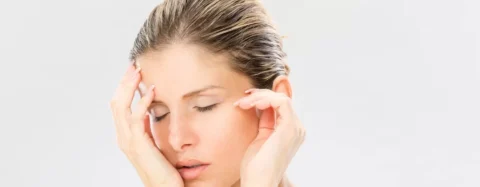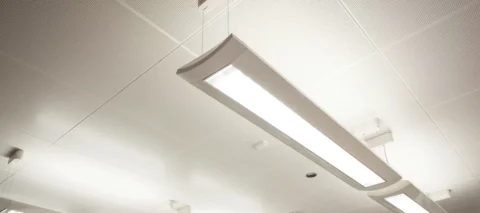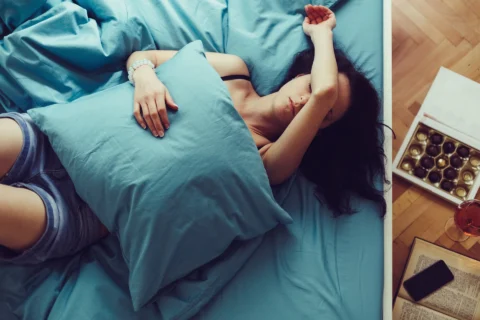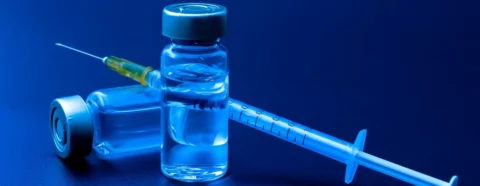Botox cosmetic is a gold standard in wrinkle treatments and it is one of the best alternatives to plastic surgery for facial enhancement and skin rejuvenation. This cosmetic procedure is well-loved for many reasons but one thing that many patients love about it is that it needs no downtime. Recovery after getting the injections is quick and following aftercare instructions goes a long way for optimal Botox results.
So what are the top Botox aftercare instructions that every patient should remember? After your Botox procedure, your dermatologist or provider will give aftercare tips to avoid complications from the treatment. Common Botox aftercare includes avoiding excess sun exposure, minimizing strenuous physical activity, avoiding other facial treatments, limiting the use of makeup products, and avoiding blood thinning medications.
7 Post-Botox Forehead Aftercare Instructions
One of the common treatment areas for Botox injections is in the forehead. It is usually injected into the muscles in the forehead and between the eyebrows to reduce visible glabellar lines, vertical frown lines, and horizontal forehead wrinkles that make men and women look older.
The cosmetic procedure is widely known for its muscle-relaxing effects that limit muscle contraction to gradually smooth away wrinkles and fine lines and prevent new ones from forming. But even though the Botox treatment is minimally invasive, individuals still need to exercise caution and avoid excessive activities that may interrupt with the effects of the injection.
After a Botox appointment, patients are always reminded to take it easy and allow the neurotoxin injection to settle in smoothly in the facial muscles. Here are the top seven Botox aftercare reminders that patients should follow:
1. Don’t stay out too much in extremely hot temperatures
Botox forehead injections can induce temporary swelling and bruising in the treated area. Any kind of exposure to hot temperatures can cause your blood vessels to widen which can promote increased redness or bruising since it increases the flow of blood to the skin. After your Botox treatment, you may want to limit going outdoors or use any kind of protection from the sun to protect the treatment area and avoid prolonged bruising.
You will also be advised to cancel or reschedule any appointment to hot saunas and tanning salons after your Botox procedure. If you wash your face, it is recommended to use lukewarm water and do gentle motions to avoid putting pressure on the treated area.
2. Relax and avoid any vigorous physical activity or exercise
Exercising is good for your overall health and fitness, and sometimes it is ideal for getting rid of facial toxins and promoting a healthy skin glow. However, any form of exercise may not be as ideal once you get Botox injections.
Your doctor will recommend you to wait at least 24 to 48 hours from your Botox treatment before you resume your daily workout routine. For one, exercising right after your Botox injection will cause you to sweat excessively and you will be touching your face before you even know it. You want to avoid rubbing or wiping sweat from your face since this may cause the Botox to spread beyond the injection site and move to unintended muscles.
Another reason why you avoiding exercise is part of Botox aftercare is because it increases the pump of blood from your heart. The increased blood flow can also affect the botulinum toxin injection and migrate it to other facial areas.
In addition, exercise routines that require too much head movement like certain positions in yoga or aerobics may cause forehead Botox to spread to other areas. You can resort to light walking or strolling to keep fit while waiting for Botox to kick in.
3. Skip on other cosmetic procedures or facial treatment
If you’ve set up appointments for skin treatments like a facial massage or skin procedures prior to getting your Botox, you may want to call your provider to reschedule. Facials and massage therapy may interfere with your recovery and cause Botox to move to other areas of the face.
Likewise, if you have initially scheduled a laser or dermal filler treatment, your doctor will suggest waiting to see the full effects of Botox before deciding to proceed with another cosmetic procedure. It is best to wait for one to two weeks after Botox if you still want to get another cosmetic treatment for better facial rejuvenation results.
4. Keep it natural and go makeup-free
You will also want to keep it light with putting on beauty and makeup products on the face. It is typically hard to avoid rubbing the face, especially when applying foundation, moisturizers, or skincare serums so there’s a chance that Botox may disperse from the treatment area.
As a safety precaution and to assure that you get the best Botox results, you should take a break from using heavy makeup for at least 24 hours after your procedure. If you want to cleanse your face, you can use facial wipes and lightly dab them on your forehead.
5. Don’t drink alcohol or any other blood thinning medications
Your cosmetic surgeon or Botox provider will also advise you to not take any blood thinner drugs or anti-inflammatory supplements like Aspirin, Advil, and Ibuprofen. These medications have blood thinning properties which can promote increased blood flow in the vessels and lead to additional bruising or swelling in the treatment area. You should also avoid drinking alcoholic beverages since it is considered a blood thinner.
If you want to manage the pain or bruising in the injection site after the Botox cosmetic treatment, it’s best to place an ice pack or topical numbing cream rather than taking painkillers or anti-inflammatory medications.
6. Keep upright and avoid laying on your face
A common misconception about Botox aftercare is that you cannot lay down after the injections. The good news is that you can still sleep comfortably at night even after receiving the treatment but it is recommended to sit upright for at least four hours once you exit the Botox clinic.
When you have to sleep, just be mindful of your position and avoid laying on the treated areas. If you got Botox in the forehead, try your best not to sleep with your face on your pillow to avoid pressure in the injected sites. It’s ideal to sleep on your back and you can put pillows on the side so you can lessen your movements.
7. Do gentle facial exercises and movements
While you cannot directly touch, massage, or rub the treated facial areas, you can do simple facial exercises after getting Botox. There is a study that shows doing light facial exercises can provide quicker onset of the toxin so you can see earlier results.
Facial movements like squinting or raising your eyebrows can especially allow the toxin to settle in the forehead muscles. This is recommended for patients who get Botox treatment at the last minute for important events and occasions.
What Happens Immediately After Getting Botox Injections For Forehead?
When administered by an experienced Botox professional, the treatment itself is safe and without any complications. A standard session of Botox injections is fast and convenient, and can be done in under an hour. Most individuals can return to their work and normal activities as soon as they finish their Botox procedure.
However, patients can still experience side effects since the injections are usually given intramuscularly to the forehead muscles. The common post-treatment reactions are pain at the injection site, swelling, tenderness, bruising, and redness. Most side effects are temporary and can resolve on their own in several days.
Minor headaches and mild flu-like symptoms can also happen but it only occurs in very few patients as reported in several studies. This can be remedied by taking over-the-counter medications and making sure to drink plenty of water after the treatment.
Some patients who receive Botox in the forehead or between the eyes also report droopy eyelids or muscle weakness. This only happens when the provider is inexperienced and places the toxin in the wrong area. Thankfully, it is not a serious complication and it usually goes away within several weeks. Your doctor may prescribe you some eye drops to help with your eyelid drooping or you may get more Botox to counteract its effects.
The results of Botox are not visible immediately though you can see initial improvements within 2 to 3 days. Full effects of the neurotoxin injection are noticeable after two weeks, and you can enjoy the Botox forehead results for 3 to 4 months.
Where Else Is Botox Treatment Used?

Botox has been around for decades and it has been enjoyed by many patients as an anti wrinkle injection for facial wrinkles, glabellar lines, Crow’s feet. But in addition to its wrinkle relaxing effects, many providers use Botox for other off-label cosmetic purposes such as:
- Lip augmentation – Botox can be injected into the lips to help restore plumpness and provide a better lip pout.
- Non-surgical brow lift – Botox brow lifts are also becoming popular since they can improve your natural eyebrow look and erase frown lines between the eyebrows without any surgical procedure.
- Gummy smile and jawline contour – Botox can also be placed in the upper lip and nose area to help correct a gummy smile. You can also achieve a slimmer jawline and well-contoured facial shape by injecting Botox into the masseter or jaw muscles.
- Acne treatment – Botox treatment is also said to help clear away acne scars and it can reduce future acne breakouts by controlling the oil production in the pores and skin.
Aside from cosmetic medicine, the neurotoxin also has therapeutic uses and is widely popular among the medical community. Botox is FDA-approved as a prescription medicine for certain conditions like chronic migraines, excessive sweating, muscle and neck spasms, and overactive bladder.
Which Is Better: Dermal Filler or Botox?
Botox is often confused with dermal filler treatments when it comes to options for cosmetic injectables. The key point of difference is that Botox affects the facial muscles when injected beneath the skin, while dermal fillers fill in the areas affected by wrinkling, creases, and lost facial volume.
In choosing which treatment to go for, your doctor will assess the condition of your wrinkles. If you have dynamic wrinkles from repeated facial expressions and muscle movement, Botox is the more ideal treatment to relax your over-contracted muscles and smooth your facial lines and forehead wrinkles.
On the other hand, dermal fillers are more suited for the treatment of facial concerns that result from lost collagen and facial volume. Hyaluronic acid fillers are the most common type of dermal filler injections, and when injected to the intended areas, it instantly restores volume and corrects deep wrinkles and facial folds. Fillers can also address the issues of skin laxity and sagging, unlike Botox which has little effect for skin tightening.
For best skin rejuvenation results, some aesthetic providers may suggest combining Botox and dermal filler treatments. This helps reverse the signs of aging while giving back your skin’s plump and youthful look.
What You Can Do To Make Botox Effects Last Longer

Following your doctor’s advice for Botox aftercare can guarantee you the best outcomes from your cosmetic procedure. Here are other tips to help you maximize its effects and make Botox injections last longer:
- Start wearing sunscreen products to protect your skin from sun damage and avoid worsening your skin blemishes.
- Practice a good daily skincare routine and invest in collagen-rich and hyaluronic acid-based serums, creams, and moisturizing lotions.
- Hydrate your body and face by drinking plenty of water to avoid dry and rough skin texture.
- Recognize your stressors and avoid them since high levels of stress can release hormones that can influence acne breakouts and wrinkle formation.
- You can also get regular Botox maintenance sessions to maintain its effects and prevent new wrinkles.
Ethos Spa: Your Partner For Quality Botox Forehead Treatments
It is recommended to always follow aftercare instructions and post-Botox reminders to see the best results. You can also guarantee safe and effective Botox forehead treatments when you get them from the cosmetic professionals at Ethos Aesthetics + Wellness.
All our Botox procedures are performed by highly qualified and trained injectors to assure the best aesthetic experience for every client. Our medspa also offers a wide range of quality cosmetic treatments including dermal filler, chemical peel, Secret RF microneedling, laser hair removal, and more. Contact us today to inquire about our services or schedule your first visit with one of our Botox specialists.







